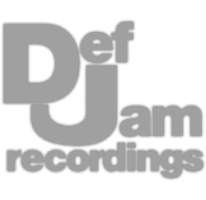Professional Analog Mastering.
Professional Analog Mastering.










This plugin is really something special—it’s a container for amp, guitar cabinet, and pedal neural networks. All of these have been created by musicians and engineers with a good understanding of machine learning using NAM’s open-source program.
In short, these generous musicians have run their gear through the program and generated files that anyone can input into the Neural Amp Modeler.
Unlike impulse responses, these models can recreate harmonic distortion, frequency-dependent ADSR, compression, and more to fully encapsulate the behavior of any hardware.
So, I’ve found models for the Neve 1073, the Handcrafted Velvet Preamp, and a 15ips Studer Tape machine.
The only complication is that these files are designed for mono signals - for example, you’ll notice that the left and right channels of the Neve 1073 are modeled separately.
When mastering or processing a stereo file, we’ll need to use some creative routing, but nothing too crazy.
In short, I’ll duplicate the track and use a plugin to isolate the left channel on one and the right channel on the other - in this case, I’m using the free plugin ISOL8 by TBProAudio.
Then, I’ll insert the Neural Amp Modeler and import the Left model on the left channel and the Right model on the right channel.
I’ll turn off the Gating, EQ, and Normalize functions and rely solely on driving the input into the model and compensating with the output to control the amount of THD.
For the Studer model, heavy distortion is introduced at the default input level, but since this is a complex model that responds to the incoming signal, I can lower the input and compensate with the output level to dial in how much distortion and character of the model I want.
I don’t know about you, but I find this extremely exciting since it basically creates a way for engineers to share the sound of their gear with one another—for free. ToneHunt is the best website I’ve found for getting new models, so check that out if you download the modeler. Hopefully, stereo modeling will soon be incorporated into the plugin.
Let’s take a listen as I switch between the original mix and loudness-compensated modeling of the Neve 1073, the Velvet Preamp, and the Studer Tape machine.
Watch the video to learn more >
Alone, these plugins work well for mastering, but when combined with the signal routed from Mo-Ma into CITE, it sounds fantastic.
Mo-Ma introduces subtle to moderate compression and harmonic distortion that can be either even or odd harmonics. CITE is a high-frequency processor that uses both EQ and harmonics to brighten the signal.
I’d recommend either of the GLUE settings on Mo-Ma, since the Mojo settings are too aggressive. Use 100% Wet with a low amount.
Then, start with a high amount of CITE and find the frequency range you want to accent before dialing in the effect by reducing the amount dial.
Let’s listen to this combination, and notice how the track sounds fuller, brighter, more detailed, and has an overall complex sound.
Watch the video to learn more >
I covered this one last week when discussing free vocal plugins, but like the plugins that inspired it, it can be used for mastering.
It allows for 16 dynamic bands, all of which can be stereo, mid, side, left, or right in their placement with 9 different filter types. The dynamic bands can have thier thresholds, attack, release and knee adjusted, and we can introduce lookahead and RMS detection up top.
We can solo bands to get a better understanding of the mix, and we get some great analyzer options.
Let’s listen to some settings that emphasize the kick, the snare’s fundamental, the mid frequencies’ width, the vocal’s clarity, and the stereo width of the air frequencies.
Watch the video to learn more >
This is a really unique compressor - the threshold changes based on the incoming level, and the levels of the mid and side channels are showcased to the right.
We can still control the amount of compression, the ratio, and the attach and release, which makes this suitable for mastering.
If you only need to create some glue and soft compression, try a long attack, a moderate release, and only a tiny bit of compression.
This track didn’t need it, but let’s listen to subtle, then aggressive compression before returning it to a usable level.
Watch the video to learn more >
This meter breaks the frequency range up, and shows the dynamic range of each. The green bar is the peak level, the blue is the majority of the tonal elements, and the purple represents the signals that are being masked or just about masked.
Meanwhile, red is the noise floor.
For the full stereo mix, we can observe the Full-Spectrum band or click the frequency ranges to solo the bands.
At the bottom, we’ll notice the level of the side image relative to the mid image. So, the side is 6dB below the mid for the overall mix. Then, we can view this value for each frequency range.
All in all this meter shows some helpful metrics when you’re mastering, and can help you indentify problems, or be used to establish some standardized relationships for EPs or albums.
Last up, we have 2 clippers with varying sounds.
I like both of these, but for different reasons.
Leikkaus has a slightly fuller sound in the mids but with more overall distortion.
Free Clip 2 sounds cleaner with less noticeable artifacts, but, it seems to loose some of the low mids. Maybe this is just in my head, but after comparing the 2, that’s what I’m hearing.
Both have similar features, but I like the compensation tool to get a better understanding of how clipping is affecting the timbre.
Let’s listen to each.